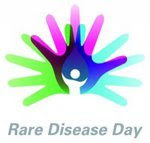Disease Severity in One Eye May Predict Progression in the Other
Study focuses on macular degeneration, the leading cause of vision loss in older Americans
Thursday, October 23, 2014THURSDAY, Oct. 23, 2014 (HealthDay News) -- The severity of age-related macular degeneration in one eye is associated with the risk of developing the disease and its progression in the other eye, a new study finds.
"Macular degeneration is a disease of the retina which damages central vision and can lead to legal blindness, and this disease is more prominent in the geriatric population," said Dr. Mark Fromer, an ophthalmologist with Lenox Hill Hospital in New York City.
In fact, age-related macular degeneration is the leading cause of vision loss among Americans 60 and older, according to the U.S. National Library of Medicine.
"Macular degeneration is also a 'symmetrical' disease, although one eye may precede the other in the progression of retinal damage and subsequent visual loss," explained Fromer, who was not connected to the new study.
In the new research, a team led by Ronald Gangnon of the University of Wisconsin School of Medicine and Public Health, analyzed data from more than 4,000 participants in the Wisconsin-based Beaver Dam Eye Study. The researchers sought to assess how the severity of age-related macular degeneration in one eye might affect disease risk and progression in the other eye.
They found that disease severity was key: More seriously age-related macular degeneration in one eye was associated with increased risk and more rapid progression of the disease in the other eye.
However, less severe disease in one eye was associated with slower progression of the disease in the other eye, the researchers said.
"The severity of macular degeneration in one eye largely tracks the same course as in the fellow eye," Fromer said.
Another expert said the Wisconsin study supports what ophthalmologists have already known about macular degeneration.
According to Dr. Scott Brodie, the usual estimate for the appearance of the disease in a second eye "is an incidence of 50 percent in the second eye over five years" -- meaning that about 10 percent of patients with macular degeneration in one eye will go on to develop the condition in the second eye in each successive year.
"Patients with age-related macular degeneration in one eye are advised to maintain a continuing relationship with their eye doctor, and to undergo a dilated eye exam once or twice each year to monitor for development of macular disease in the fellow eye," said Brodie, who is professor of ophthalmology at the Icahn School of Medicine at Mount Sinai, in New York City.
He added that certain patients, "may benefit from dietary supplementation with antioxidant vitamins and minerals [the so-called 'AREDS' vitamins] to reduce the risk of progression in the fellow eye."
The study was published online Oct. 23 in the journal JAMA Ophthalmology.
SOURCE: A Scott E. Brodie, M.D., Ph.D., professor of ophthalmology, Icahn School of Medicine at Mount Sinai, New York City; Mark Fromer, M.D., ophthalmologist, Lenox Hill Hospital, New York City; JAMA Ophthalmology, news release, Oct. 23, 2014
HealthDay
Copyright (c) 2014 HealthDay. All rights reserved.
- More Health News on:
- Macular Degeneration






















.png)











No hay comentarios:
Publicar un comentario